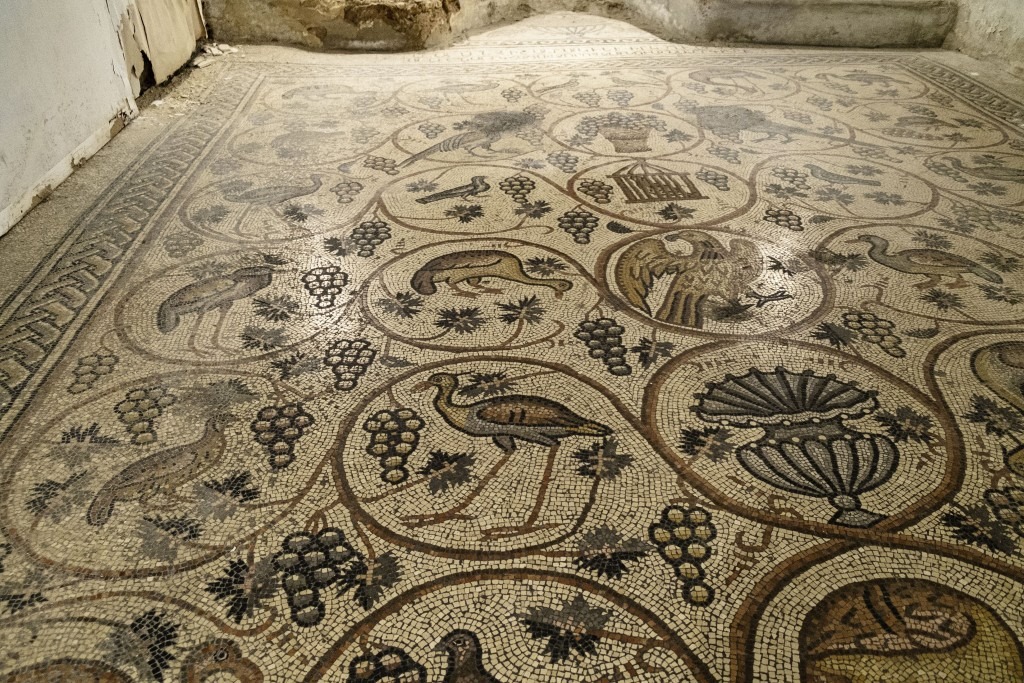
The Armenian Bird Mosaic in the Holy Land
The Armenian Apostolic Orthodox Patriarchate of Jerusalem – 4/7/18
As happens regularly in the Holy Land, construction works uncover antiquities. In 1894, some constructions were made for a home near Damascus Gate, just outside of the Old City, where they discovered a large mosaic flour, about a meter underground.
The discovery was described in the Quarterly Statement of the Palestine Exploration Fund titled “the Discovery of a Beautiful Mosaic Pavement with Armenian Inscription”.

Dr. Bliss of the Palestine Exploration Fund recognized the similarity of the mosaic with the Armenian mosaics on Mount of Olives, which can still be seen within the Russian Orthodox Convent of the Ascension (remnants of which were part of the Armenian Church of St. John the Baptist).

The mosaic floor located near Damascus Gate and the Musrara quarter, has been named the “Bird Mosaic”. Soon after the discovery a room has been built on the top of discovery, to guard the mosaic from the elements of nature. The plot is the property of the Armenian Orthodox Patriarchate of Jerusalem.
There are several written accounts, as early as the sixth century, testifying the existence of several Armenian Orthodox Churches and convents in the Holy Land, some of which were uncovered in recent years.
 The Bird Mosaic near Damascus Gate is one of the most beautiful mosaics in the Holy Land, which is indeed the witness of a thriving Armenian Orthodox community in the country as early as the mid fourth century.
The Bird Mosaic near Damascus Gate is one of the most beautiful mosaics in the Holy Land, which is indeed the witness of a thriving Armenian Orthodox community in the country as early as the mid fourth century.

The mosaic is dated to the sixth century, based on the style and the iconography. The size of the floor is about 4 x 6 meter, bordered with decorative plaits.
The design is an amphora, out of which vines sprout into medallions. The mosaic has vine leaves, curly vine tendrils and white and blue grape bunches.

In each medallion a bird is depicted; most birds are facing towards the middle, on the left and right side each are eight double rows. The design draws the attention to the middle row, which is a bit different.

Above the border of the mosaic is an inscription in Armenian: “For the Memory and Redemption of all the Armenians whose names God knows”. Above the inscription is another amphora, bordered by the drawing of two small birds. The depictions in the mosaic may symbolize life after death, but more research has is required to uncover further details.
Pictures: Dr. Claudia Venhorst.


201394 205843if the buffalo in my head could speak german i would not know a god damm thing. What i do know is that the language of art is out of this world. 820883
651894 929033Hi, you used to write exceptional articles, but the last several posts have been kinda boring I miss your super writing. Past several posts are just just a little out of track! 374805
270443 292606Enjoyed reading this, very very good stuff, thankyou . 666614